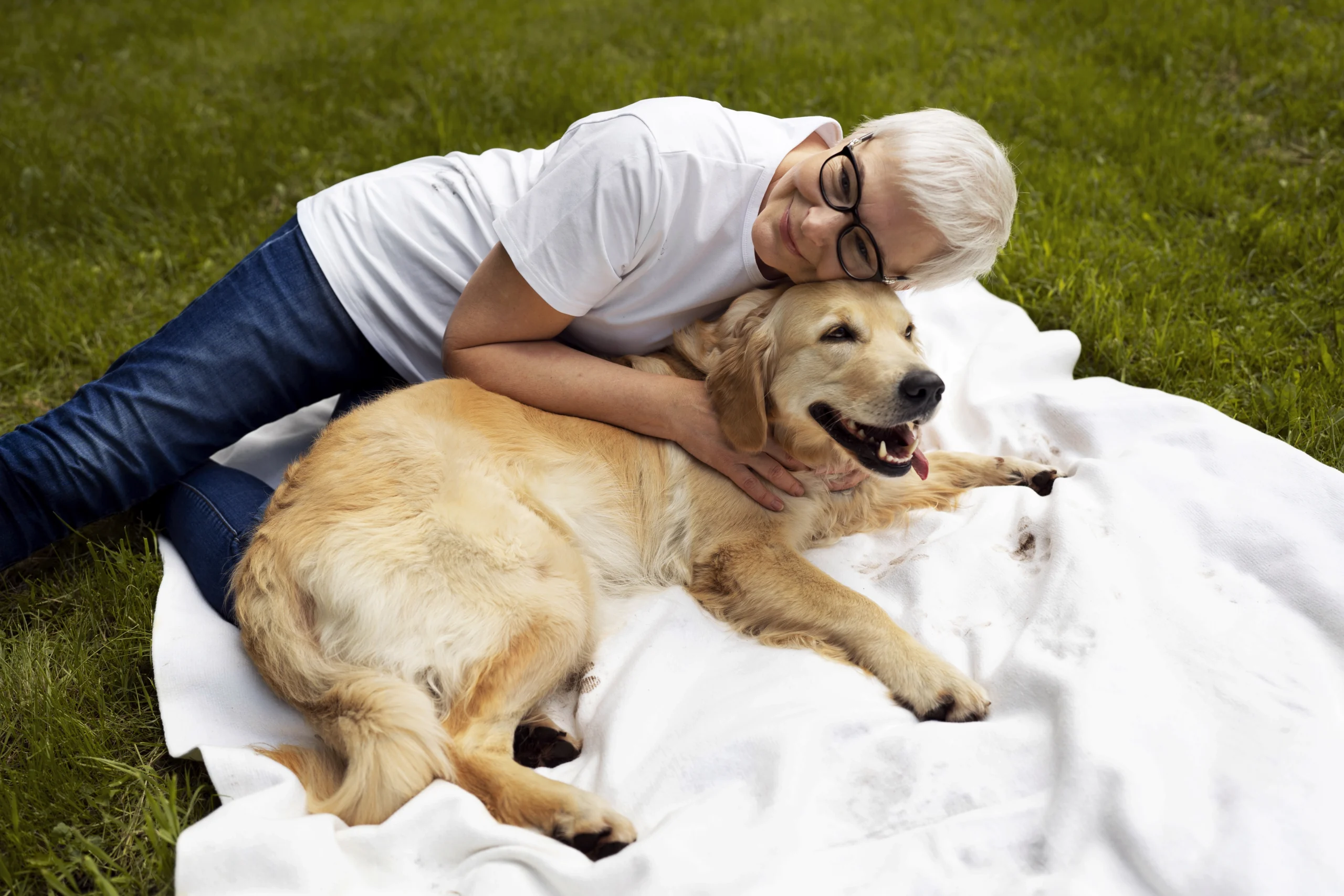Introduction
As loving pet owners, we want our dogs to live long, happy lives. But did you know that aging can sneak up on them faster than expected? Recognizing when your dog becomes a senior is crucial to providing the best care and preventing serious health issues. In this article, we’ll explore what age a dog is considered a senior, the warning signs of aging, and how to ensure your furry friend stays comfortable in their golden years.
Understanding Canine Aging
Life Stages of a Dog
Dogs go through several life stages:
- Puppy: Birth to around 1 year
- Adult: 1 to 6-7 years (varies by breed)
- Senior: Generally, 7+ years, but varies based on breed and size
Small vs. Large Breed Aging
- Small breeds (e.g., Chihuahuas, Dachshunds) typically become seniors around 9-10 years old.
- Medium breeds (e.g., Cocker Spaniels, Border Collies) reach senior status around 7-8 years old.
- Large and giant breeds (e.g., Labrador Retrievers, Great Danes) are considered seniors as early as 5-6 years old.
Signs Your Dog Is Entering the Senior Stage
Recognizing aging signs early can help prevent severe health issues. Watch for:
- Physical Changes: Graying fur, reduced muscle tone, weight fluctuations
- Behavioral Shifts: Decreased energy, increased sleeping, confusion
- Health Concerns: Joint stiffness (arthritis), vision or hearing loss, digestive issues
The Risks of Ignoring Senior Dog Health
Why Early Detection Matters
Failing to recognize aging signs can lead to undiagnosed health problems. Common risks include:
- Arthritis and joint pain worsening without treatment
- Dental disease causing infections and pain
- Cognitive dysfunction (dog dementia) leading to anxiety and confusion
- Heart, kidney, or liver diseases going unnoticed until it’s too late
Urgent Warning Signs
Seek immediate veterinary care if your senior dog shows:
- Sudden weight loss or gain
- Difficulty breathing
- Frequent vomiting or diarrhea
- Severe lethargy or disinterest in surroundings
- Sudden aggression or uncharacteristic behavior
How to Care for a Senior Dog
Providing proper care can help extend your dog’s life and quality of living.
Diet and Nutrition Adjustments
- Switch to a senior-specific diet with joint-supporting nutrients (glucosamine, omega-3s)
- Ensure proper hydration and fiber intake to aid digestion
- Control calorie intake to prevent obesity or malnutrition
Exercise and Joint Care
- Regular low-impact activities (short walks, swimming) maintain mobility
- Provide orthopedic dog beds for joint support
- Consider supplements for arthritis relief
Mental Stimulation
- Puzzle toys and scent games keep their mind sharp
- Maintain a consistent routine to reduce stress
Veterinary Care for Senior Dogs
Check-Ups and Screenings
- Routine vet visits every 6 months (vs. yearly for younger dogs)
- Blood work, X-rays, and dental exams to detect hidden issues
- Weight, heart, and mobility assessments
Common Medications & Treatments
- Pain relievers for arthritis
- Prescription diets for kidney, heart, or liver conditions
- Cognitive function supplements (DHA, SAM-e) for mental alertness
Quality of Life & End-of-Life Considerations
It’s important to assess your dog’s quality of life as they age.
Pain Management & Comfort
- Provide soft bedding and easy access to food and water
- Modify the home (ramps, non-slip mats) to accommodate mobility issues
Knowing When It’s Time
- If your dog experiences chronic pain, loss of appetite, or lack of enjoyment in life, consult your vet about humane options like pain management or euthanasia.
Conclusion
Understanding when your dog becomes a senior helps you provide the best possible care. By recognizing signs of aging early, adjusting their lifestyle, and prioritizing regular vet visits, you can ensure your furry companion enjoys a happy, comfortable life in their golden years. Don’t wait—schedule a senior check-up for your dog today!
10 FAQs About Senior Dogs
- At what age is a dog considered a senior?
- Small dogs: ~9-10 years, medium dogs: ~7-8 years, large dogs: ~5-6 years.
- Do small and large dogs age at the same rate?
- No, larger breeds age faster and have shorter lifespans.
- What are the first signs that my dog is aging?
- Graying fur, lower energy, joint stiffness, weight changes.
- How can I help my senior dog stay active?
- Gentle walks, swimming, and mental enrichment games.
- What foods are best for an aging dog?
- Senior-formulated diets rich in omega-3s, antioxidants, and joint-supporting nutrients.
- How often should a senior dog see the vet?
- At least twice a year for preventive care.
- What common health problems do senior dogs face?
- Arthritis, dental disease, heart issues, cognitive decline.
- Are there supplements to help with joint pain in senior dogs?
- Yes, glucosamine, chondroitin, and fish oil can help.
- How do I know if my senior dog is in pain?
- Limping, reluctance to move, whimpering, changes in appetite.
- When should I consider end-of-life care for my aging dog?
- When they experience chronic pain, loss of mobility, or no longer enjoy life.
By staying proactive about senior dog care, you can give your furry friend the best quality of life possible! 🐶❤️

